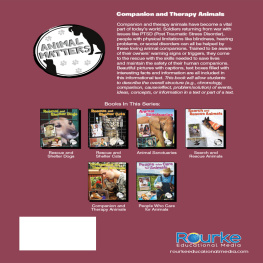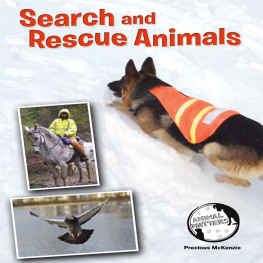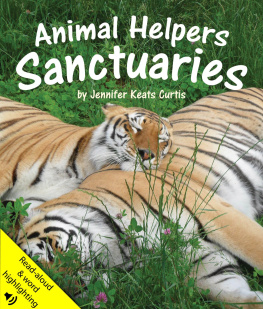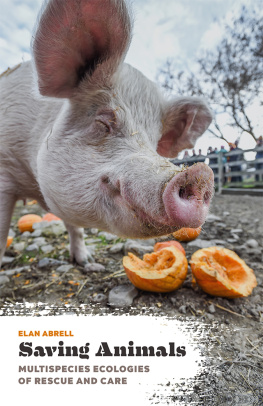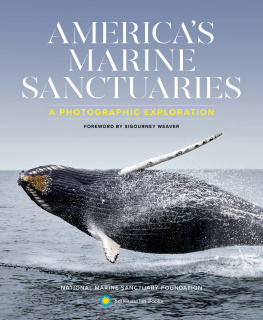Table of Contents
Guide
Animal Sanctuaries

Kelli Hicks

rourkeeducationalmedia.com | 
Scan for Related Titles
and Teacher Resources |
Before & After
Reading Activities | Level: NWord Count: 100th word: animals |
Before Reading:
Building Academic Vocabulary and Background Knowledge
Before reading a book, it is important to tap into what your child or students already know about the topic. This will help them develop their vocabulary, increase their reading comprehension, and make connections across the curriculum.
1.Look at the cover of the book. What will this book be about?
2.What do you already know about the topic?
3.Lets study the Table of Contents. What will you learn about in the books chapters?
4.What would you like to learn about this topic? Do you think you might learn about it from this book? Why or why not?
5.Use a reading journal to write about your knowledge of this topic. Record what you already know about the topic and what you hope to learn about the topic.
6.Read the book.
7.In your reading journal, record what you learned about the topic and your response to the book.
8.After reading the book complete the activities below.
Content Area Vocabulary
Read the list. What do these words mean?
carnivorous
enclosures
exhibit
exotic
habitat
neglected
protected
rehabilitated
sanctuary
species
unique
After Reading:
Comprehension and Extension Activity
After reading the book, work on the following questions with your child or students in order to check their level of reading comprehension and content mastery.
1.Why are yearly inspections important to have at sanctuaries? (Asking questions)
2.Why do people want exotic animals as pets? (Summarize)
3.Can the animals at a sanctuary be released back into their wild, natural habitat? Explain. (Inferring)
4.Have you seen animals used in the entertainment industry? Where? How did it make you feel? (Text to self connection)
5.Do you think a sanctuary takes in all types of animals or a single type of animal? Explain. (Asking questions)
Extension Activity
Hidden sanctuaries. Research your state for animal sanctuaries. You may be surprised at what you find! What kind of sanctuary is it? How far is it from your town? What are some ways you can help? Create a poster that informs your school or the community about the sanctuary and ways they can help. Hang the poster up in the hallway at school or your local library.
Chapter 1
Living Wild
When you think of lions and tigers in the wild, what do you see? Do you picture a sweeping savannah with long swaying grass or an African desert with hot sands and dry underbrush? Animals in the wild live in a that provides them with a home, water, and food.


.

Animals taken from their natural habitat are often used as entertainment at the expense of their happiness and ability to thrive in an unknown world.
FURRY FACT
What is a Poacher? A poacher is an individual that illegally takes an animal out of its home or kills an animal for its skin, tusks, or other body parts. Poachers are motivated by money and have contributed to a dramatic decline in the population of many animals, including African elephants.

African elephant

Chapter 2
Finding Sanctuary
An animal sanctuary is a home. It is a place where animals go to be cared for and to have a safe environment to live out their lives. A sanctuary provides all the care an animal needs to have the best life possible.

Unfortunately, there is a need for animal sanctuaries for many different animals.
FURRY FACT
Most animal sanctuaries are animal rescues for wild or exotic animals with one difference. Animals at sanctuaries will never be adopted. They will live out their lives at the sanctuary.

Bengali is a male Siberian/Bengal Tiger, who lives at Big Cat Rescue in Tampa, Florida. He came to live at the sanctuary on December 5, 2000 when the circus who had him performing retired him at the age of five. To read more about Bengali visit http://bigcatrescue.org/bengali/ .
animals to the public participates in yearly inspections to ensure animals are cared for properly.

Some sanctuaries will allow visitors to view the less threatening animals up close, but the more threatening animals are sometimes off limits.
FURRY FACT
The Animal Sanctuary Association, started in 1998, works to help find homes for rescued animals. They also monitor the activities of active sanctuaries and review applications of new groups to ensure that a high standard of care is met by all of its members.

Chapter 3
Care and Comfort
There are many factors to consider when caring for wild animals. Caretakers feed animals on a regular schedule and provide them food that is close to or the same as what they might eat in the wild. Workers clean the and cared for by humans who try to earn their trust.



